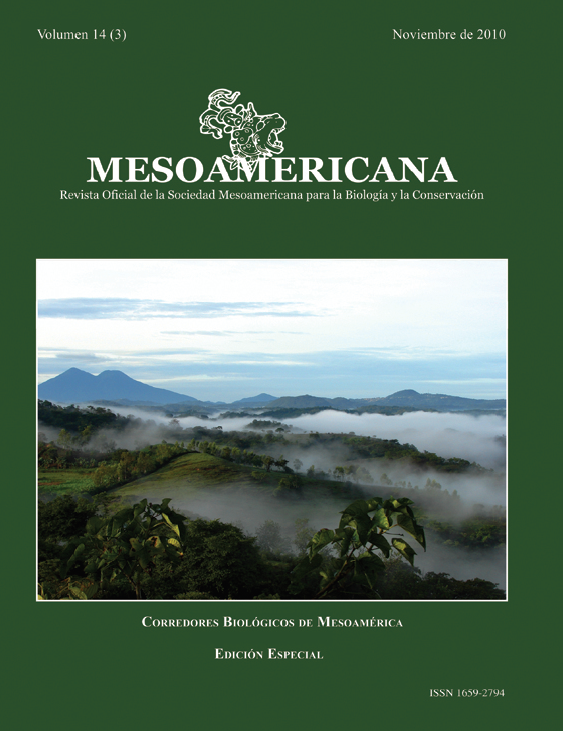

San Juan-La Selva Biological Corridor (SJSBC), in northern Costa Rica, is a conservation initiative that pretends to act as linkage between forested spaces of Nicaragua and Costa Rica. Due to the imminence of the fragmentation process that SJSBC has suffered, a need to search for strategies to maintain and improve connectivity in this Biological Corridor has risen. A pilot area was defined inside a sector called “Tapón de Chilamate” (Chilamate´s Stopper), which is considered as the most vulnerable zone of the whole Corridor to landscape fragmentation, to seek for connectivity consolidation strategies. The pilot area has 1567 ha and involves four communities, agricultural and cattling activities, as well as several forest fragments; in addition it is a diverse and complex landscape, a sample of the Biological Corridor and a living laboratory to search for the strengthening of ecological connectivity. Because it is a conservation effort that looks towards sustainable development, both biophysical environment and communities were issued, regarding that it is the population who finally decides how to manage their own lands. Structural connectivity routes were traced, and once identified, different methods were proposed to achieve this goal. Strategies were defined at different time scales (short, medium and long term) to guarantee their effectiveness. The study was conducted at a detailed scale (1:25,000), causing the results to act almost as a manual for decision makers in the interest area.